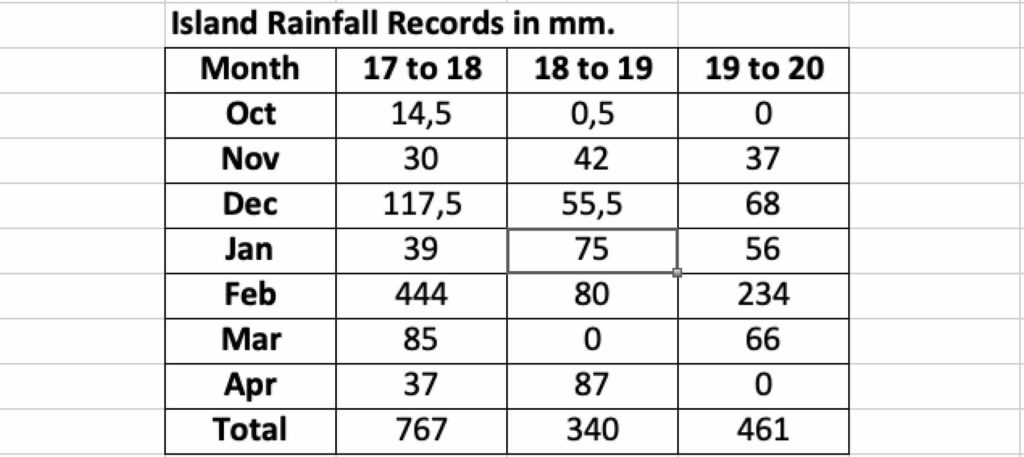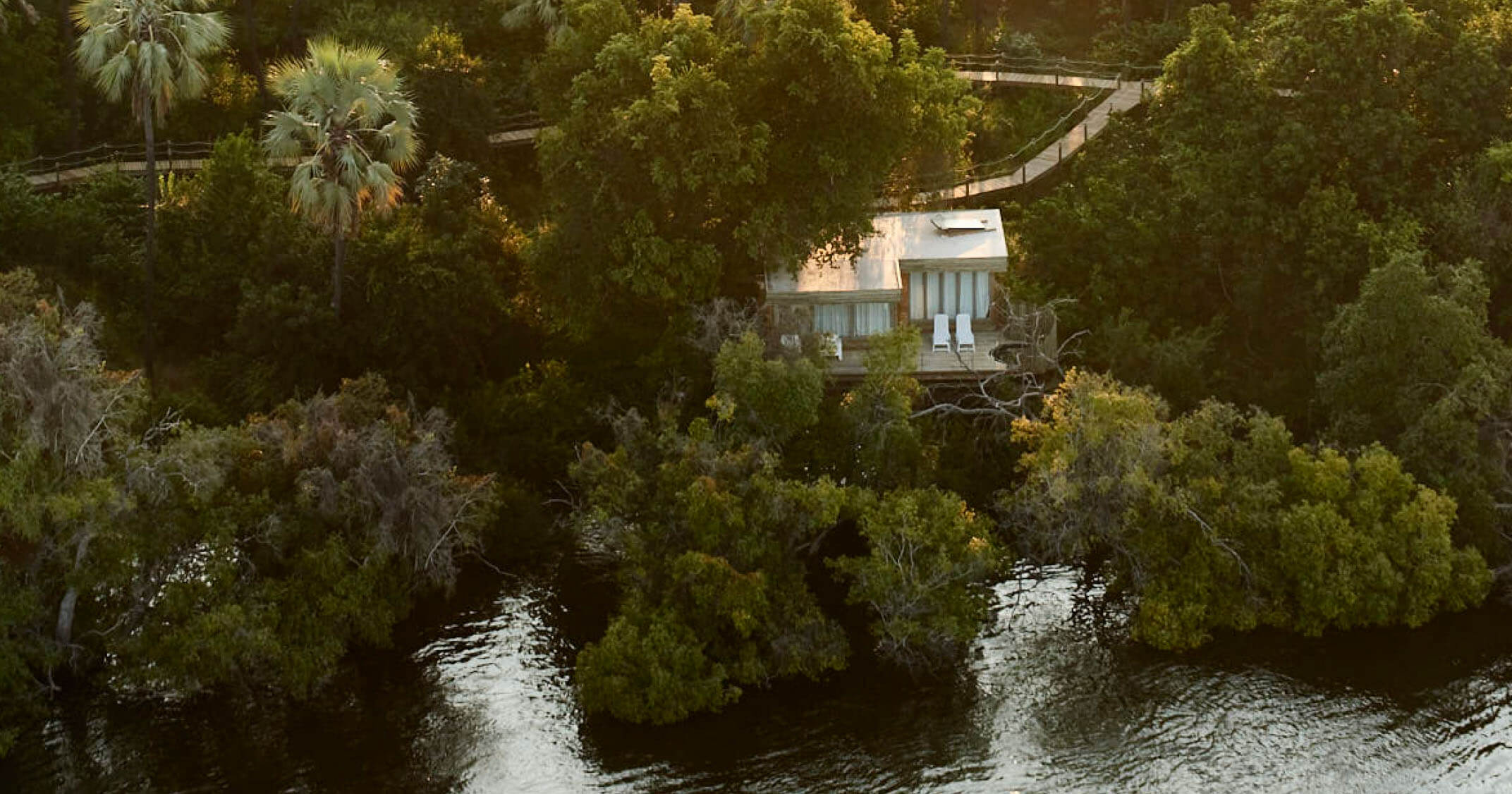After two weeks off I drove from Bulawayo back to Victoria Falls on 24th March. As it turned out, I was just in time to avoid being stuck in Bulawayo for the lock-down, which was initially put in place to finish on 20th April.
I came back to an Island unrecognisable from the place I had left behind.
Our reservations system showed that many of our bookings due to arrive in April, and May, had been postponed. Similarly, bookings were being postponed throughout the coming months. The bulk of our staff had gone home, and a once-promising season was in tatters. I am now spending lockdown here, on the Island, with a security guard at night and a cleaner who comes in from town twice a week. When he is here, Blessing turns on taps, runs air-conditioners and fans, and tries to prevent the deterioration of man-made things that decay alarmingly fast in Africa.
I go to town once a week to change security guards and get some fresh food. As much as I love my Island home, it feels wonderful to get a change of scenery.
The world has changed in a very radical manner over the last month. I am sure I am not the only person who wonders if it will ever be the same again.
We should have been completely full for Easter, leading into seven months of high occupancies, hard work, and happy guests from all over the world. That is all gone now.

As soon as I got back here, I began measuring and recording the height of the river every morning. It has been an interesting exercise, and it seems certain that the Zambezi has much in store for us yet this year. I estimate that the river peaked on 1st April with a volume of 4,289 m3/s. It then dropped slowly and steadily by about an inch a day until 11th April, and it is now rising by an inch a day.
We are getting lots of photos and feedback from Zambia and Angola which suggests that a huge amount of water is on its way. The two unknowns are how much, and how long until it arrives.
The photo of my tent on its platform illustrates perfectly my deeply personal interest in the river level.
We last had rain on the Island on 27 March.
This 5mm brought our seasonal total to 461mm at the time of writing. In both 2018 and 2019 we had significant rains in early April, but not so far this year. If none more falls, then we will have had 60% of the 2017/18 total, and 136% of the 2018/19 total.
At the time of writing it is unseasonably hot here. We seem to hit a high of 34 degrees most days, and by the middle of April we should be cooling down. This leads me to think that one more rain event is possible. Clouds do build most days, but the weather reports do not forecast rain in the next week.
Elephants should be regular visitors to the Island by now, and their absence is puzzling me. Two bulls arrived last week but did not stay long. The herds that were at the river at the end of March are not around either.
The Ilala Palm fruits are changing in colour from green to brown as things dry out, and the elephants in previous years were quick to take advantage of this ripening. The interior of the Island is still lush and green, as seen in the photo below. The palm fronds that fall down litter the Island floor beneath the trees. Termites are busy at work breaking them down and returning the nutrients back into the forest floor.

During the month I took the very difficult decision to move all the banded mongooses off the Island.
Their numbers had increased alarmingly, and it was becoming clear that they were perpetually hungry here. I really miss their company, but I know it was the right thing to do. A huge troop of them move regularly through River Lodge, and I like to think that the newcomers from the Island joined them seamlessly. I took a video of one a week or so ago, as I’m sure he recognized my voice and came to see if I was perhaps carrying a snack for him.
From about the 20th of April, temperatures started to drop here, which is to be expected. Our minimum now is about 17 degrees and the maximum 28. Once again, I feel saddened that we cannot share the combination of moderate and supremely comfortable temperatures with the majesty of a steadily rising Zambezi. In accordance with the country-wide lockdown, all National Parks are closed. On 3 May, the President will review the situation and we hope very much that the Rain Forest will be opened so that at least us locals can go in to experience the waterfall.
The big news here as I finish the April blog is, of course, the state of the river. The Zambezi has now been rising surely and steadily since 11 April. Here on the Island, it has come up by 14” in 16 days. We are now a few inches away from the maximum flow of 4,675 m3/s recorded on 16 May 2018. This flood was a ten-year high, so it seems almost guaranteed that we will exceed that record with ease. It has been a very unusual three years here because last year was a forty-year low with a low water minimum volume of only 888 m3/s. These wild swings cannot be considered normal.
If the Zambezi continues to rise daily at about an inch a day, then I will have to make a decision about my tent in about two weeks’ time. Interesting times, and not just due to the virus.
Our hopes for some late rain seem to be dashed now. I have included a simple spreadsheet of the last three rainy seasons to illustrate how it has varied from year to year. The flood this year is in no way caused by local rains.

A Natal Mahogany (Trichelia Emetica) grows on the riverside of the platform upon which my tent is placed. In 1976 our country was in the middle of civil war, and it seems certain that soldiers of the Rhodesian Government were stationed on the Island to try and prevent ZIPRA forces from crossing into Zimbabwe from Zambia.
In a moment of boredom, one of these soldiers carved the year and other indecipherable words into the trunk of this tree. A piece of this sad history remains 44 years later.
As April draws to a close, and the world struggles to deal with the pandemic, it is hard to imagine when the travel bans might be lifted and we will be able to open our doors again to guests from all over the world. In the meantime, I have a lot of precious time to sit and watch the Zambezi River, building its strength and power every day.
Stay safe, and remember the Victoria Falls when these moments of madness are behind us.



